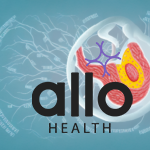Testicular Diseases: Torsion, Epididymitis, Hydrocele, Orchitis, Hypogonadism, Testicular Cancer

Allo Health is dedicated to personalized well-being, offering support and trusted information tailored to individual health goals. The platform emphasizes human-generated content, led by a distinguished medical team of experts, including physicians and sexual health specialists. Their commitment to credibility involves rigorous fact-checking, authoritative research, and continuous updates to ensure accurate, up-to-date information. Allo Health's unique approach goes beyond conventional platforms, providing expert-led insights and a continuous commitment to excellence, with user feedback playing a crucial role in shaping the platform's authoritative voice.

A Psychotherapist with Clinical specialization, working for over seven years now. Areas of specialization range from Anxiety-related disorders, Mood-related disorders, Personality disorders, Sexual dysfunctions & other mental health issues.
Why This Was Upated?
Our experts continually monitor the health and wellness space, and we update our articles when new information became available.
Updated on 17 April, 2024
- Article was updated as part of our commitment to diversity, equity, and inclusion.

"The following blog article provides general information and insights on various topics. However, it is important to note that the information presented is not intended as professional advice in any specific field or area. The content of this blog is for general educational and informational purposes only.
Book consultation
The content should not be interpreted as endorsement, recommendation, or guarantee of any product, service, or information mentioned. Readers are solely responsible for the decisions and actions they take based on the information provided in this blog. It is essential to exercise individual judgment, critical thinking, and personal responsibility when applying or implementing any information or suggestions discussed in the blog."
The testicles, or testes which produce sperm and male hormones, play a vital role in men’s overall reproductive health. Inside the scrotum are two egg-shaped organs, the loose pouch of skin behind the penis. But do you know that bones or muscles do not cover the testicles; thus, they are pretty vulnerable to injury?
Every month, you should check your testicles, and if you notice any lumps, redness, soreness, or other changes, you should consult a doctor. Testicles may become infected or swollen. Here we have mentioned some common testicular diseases that can affect the testicles.
Testicular Torsion
Testicular Torsion happens when the spermatic cord stops the testicle’s blood flow, resulting in testicular torsion. This can cause a lack of blood supply to the testicle, leading to pain and swelling.
Symptoms
- Sudden and severe pain in one testicle
- Swelling or redness of the testicle
- Abdominal or groin pain
- Nausea and vomiting
- A feeling of heaviness in the testicle
Treatment
Treatment for testicular torsion typically involves surgery to untwist the spermatic cord and reposition the testicle to prevent it from twisting again. If treatment is done within a few hours of the onset of symptoms, the testicle can be saved in most cases. If not treated in time, the testicle may have to be removed, leading to infertility on that side.
Epididymitis
The long tube that lies along the testicles can become inflamed or infected in the Epididymis. Epididymitis can be caused by a bacterial or viral infection, such as a sexually transmitted infection (STI) or a urinary tract infection (UTI), or it can be caused by a non-infectious inflammation, such as an injury or a structure-related concerns in the urinary tract. Trauma, a vasectomy side effect, and other concerns are also possible causes of epididymitis.
The long tube that lies along the testicles can become inflamed or infected in the Epididymis. Sexually transmitted illnesses, trauma, a vasectomy side effect etc. are all possible causes of epididymitis.
Symptoms
- Sudden and severe testicular pain in one testicle
- Swelling or redness of the testicle
- Abdominal or groin pain
- Nausea and vomiting
- A feeling of heaviness in the testicle
Treatment
Treatment for epididymitis typically involves antibiotics to clear up any bacterial infection and pain relievers to relieve pain and inflammation. In some cases, bed rest and scrotal support may also be recommended. If the inflammation is caused by a structural problem, surgery may be necessary.
Hydrocele
A fluid accumulation around the testicles is known as a hydrocele. It can enlarge the scrotum and groyne region and affect one or both testicles. Although they can happen later in life, hydrocele more frequently occurs in infants with a hole between the abdomen and scrotum. Men typically develop hydrocele from injury, inflammation, testicular infection, or epididymitis.
Symptoms
Symptoms of hydrocele can include:
- A painless scrotal swelling
- A feeling of heaviness in the scrotum
- A dull ache in the scrotum
- A visible increase in the size of one or both testicles
Treatment
In most cases, hydrocele is not harmful or unpleasant and may not even require treatment. However, a doctor should be seen if there is any scrotal oedema. Sometimes, hydrocele can produce symptoms other than swelling, such as slight pain, scrotal soreness, or redness.
Orchitis
One or both testicles might become inflamed with orchitis. A viral or bacterial illness typically brings it on. Orchitis is an inflammation of one or both testicles. It is most commonly caused by a bacterial infection, such as mumps, but can also be caused by other infections, such as epididymitis or sexually transmitted infections. Epididymal-orchitis is the name given to this kind of orchitis.
Symptoms
- Testicular and scrotal pain and tenderness
- Infertility
- Fever and nausea.
Treatment
Treatment typically involves antibiotics to clear the infection, as well as pain relievers to manage symptoms. In some cases, bed rest and cold compresses may also be recommended. If left untreated, orchitis can lead to complications such as infertility.
Hypogonadism
Hypogonadism develops when the testicles fail to produce enough of the hormone testosterone. Men’s concerns related to erectile dysfunction decreased sex desire, infertility, osteoporosis, enlarged breast tissue, fallen body and beard hair, depression, lethargy, and hot flashes can all be brought on by low testosterone levels. Often, testosterone replacement treatment can be used to treat it. Treating the underlying cause of hypogonadism, such as a pituitary disorder, may eliminate the condition’s symptoms.
There are different types of hypogonadism such as primary, secondary, and congenital. Primary hypogonadism is caused by concerns in relation to the testes themselves, while secondary hypogonadism is caused by concerns with the pituitary gland or hypothalamus. Congenital hypogonadism is present at birth and can be caused by genetic or chromosomal abnormalities.
Symptoms
- Decreased libido
- Erectile dysfunction
- Decreased muscle mass and strength
- Fatigue, and depression
- Can also cause infertility.
Treatment
Treatment options vary depending on the cause of the hypogonadism but may include testosterone replacement therapy, surgery, or other medications.
Testicular Cancer
A cell growth that begins in the testicles is called testicular cancer. The development of cancer cells is rapid. They continually spread outside of the testicle to other body regions. Even if testicular cancer spreads to different bodily areas, it is still curable.
Symptoms
- Lump or swelling in one of the testicles
- Pain or discomfort in the testicle or scrotum
- A feeling of heaviness in the scrotum
- Dull ache in the lower abdomen or back
Treatment
The treatment for testicular cancer depends on the type and stage of cancer. Surgery to remove the affected testicle is usually the first step. Additional treatments such as radiation therapy or chemotherapy may also be recommended.
In most cases, testicular cancer is highly treatable and the survival rate is very high. Regular self-examination and early detection through medical check-ups can increase the chances of successful treatment.
The testes may become afflicted by a variety of illnesses. A doctor should examine all testicular disorders, even if not all of them will need to be treated. Call your doctor if you experience scrotal or testicular symptoms, such as pain, swelling, soreness, or a lump. Some illnesses could be severe and even lethal if not treated right away!
Azoospermia
Azoospermia is a condition in which there is an absence of sperm in the semen. This can be caused by a variety of factors, including genetic disorders, hormonal imbalances, infections, or injury to the reproductive system.
There are two types of azoospermia: obstructive and non-obstructive. Obstructive azoospermia is caused by a blockage in the vas deferens, the tubes that carry sperm from the testicles to the urethra. Nonobstructive azoospermia is caused by defects in sperm production in the testicles.
Symptoms
Symptoms of azoospermia may include difficulty achieving pregnancy, decreased libido, or small testicles.
Treatments
Treatment options for azoospermia depend on the underlying cause. In some cases, surgery may be used to remove a blockage. In other cases, assisted reproductive technologies such as IVF with ICSI (intracytoplasmic sperm injection) may be used to achieve pregnancy. In cases where sperm production is not possible, a sperm donation is an option.
Diagnostic Tools and Tests To Identify Testicular Diseases
There are several diagnostic tests and tools that can be used to identify testicular diseases. Some of the most common include:
- Physical examination: A physical examination of the testicles, scrotum and surrounding area is often the first step in identifying testicular diseases. The doctor will look for any lumps, masses, or other abnormalities.
- Ultrasound: An ultrasound uses high-frequency sound waves to create images of the testicles. This test can help the doctor see if there are any abnormalities or tumours present.
- Blood tests: Blood tests can be used to measure the levels of certain hormones, such as testosterone, that can be affected by testicular diseases.
- Biopsy: A biopsy is a procedure in which a small sample of tissue is taken from the testicles for examination under a microscope. This test can be used to confirm a diagnosis of testicular cancer.
- CT scan: A CT scan uses X-ray technology to create detailed images of the testicles, scrotum, and surrounding areas. This test can help the doctor see if cancer has spread to other parts of the body.
- MRI: An MRI uses a magnetic field and radio waves to create detailed images of the testicles and surrounding areas. This test can be used to see if cancer has spread to other parts of the body.
It’s important to consult with a healthcare professional if you suspect you have a testicular disease, as early diagnosis and treatment can improve the outcome.







































